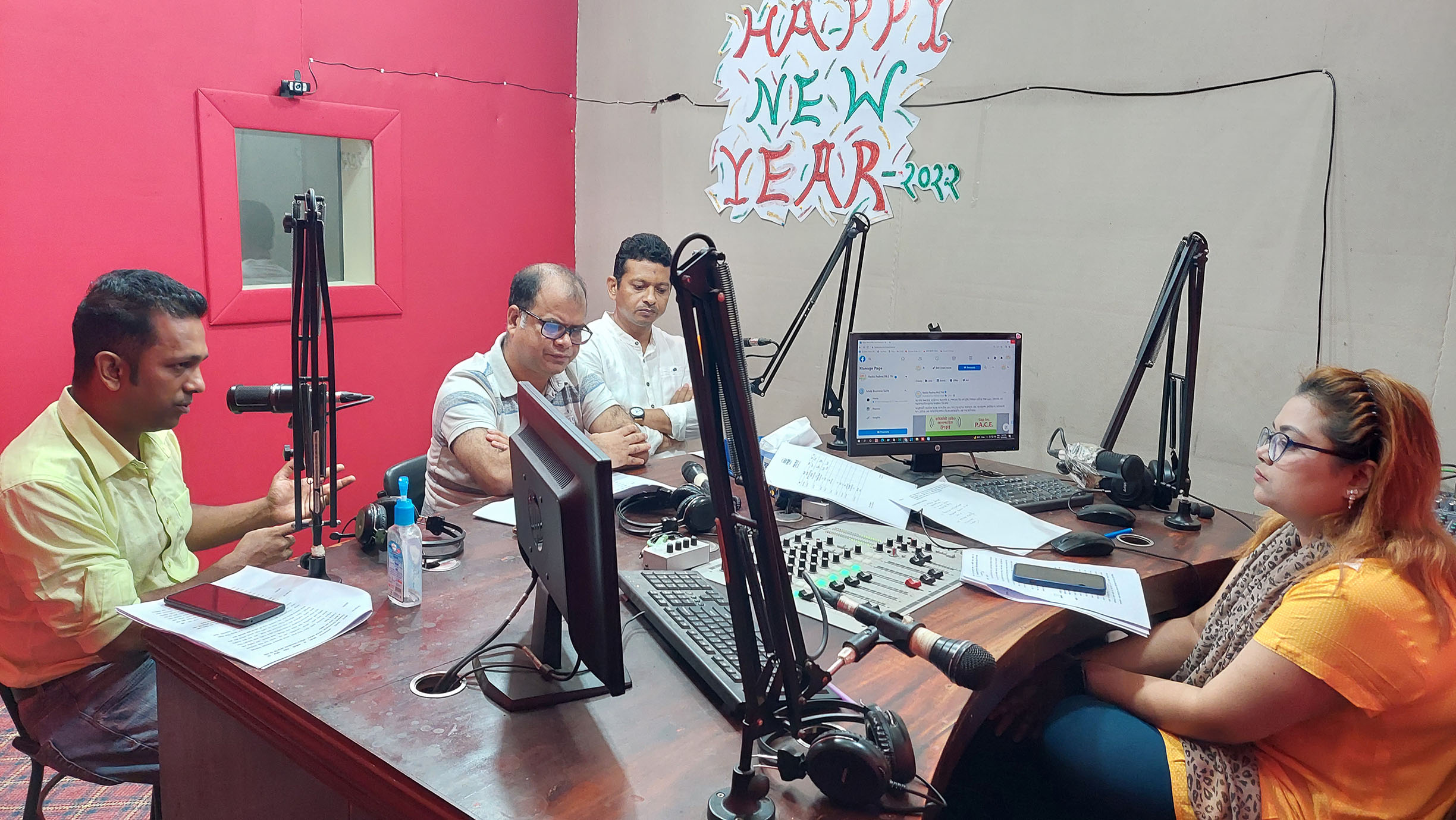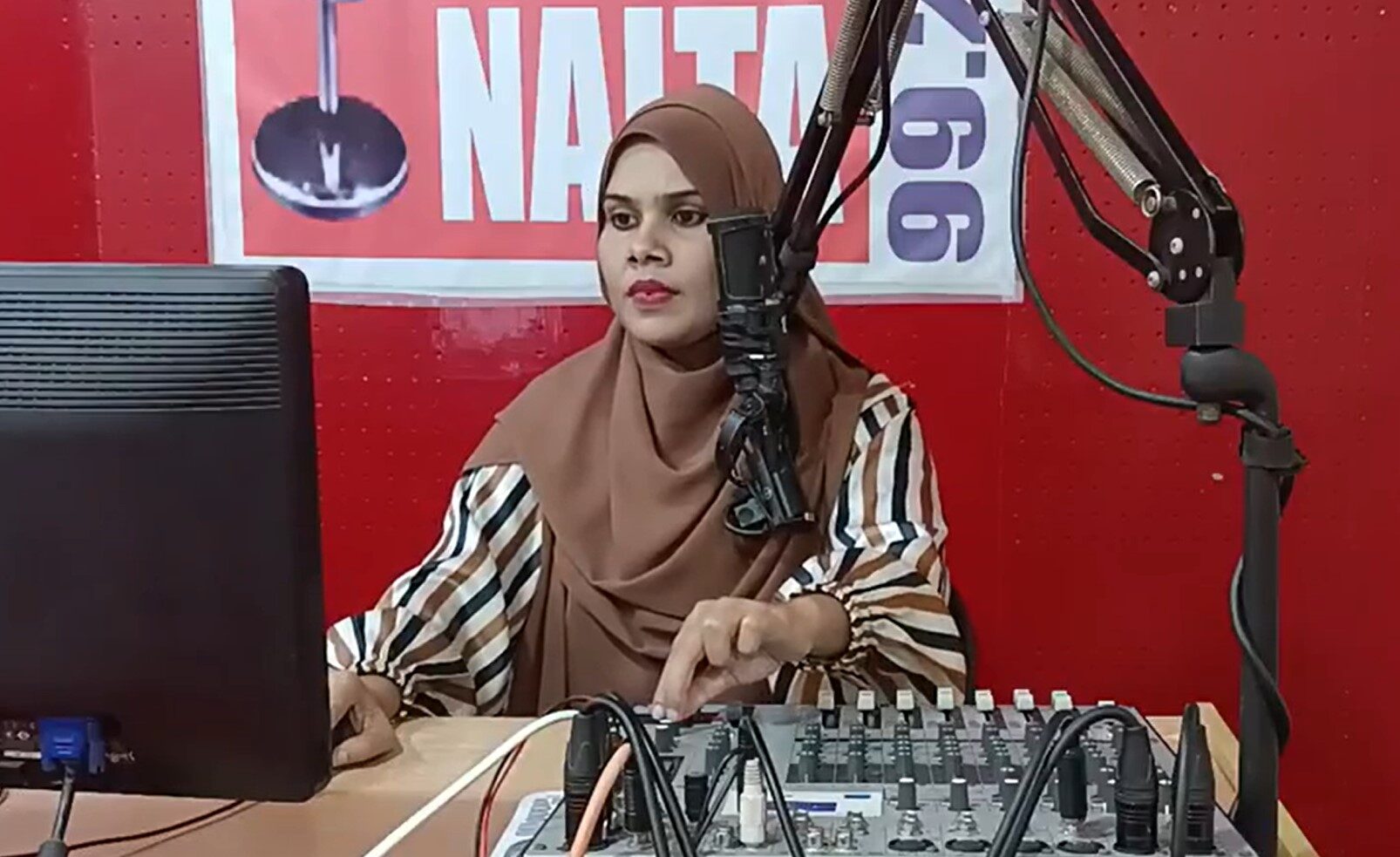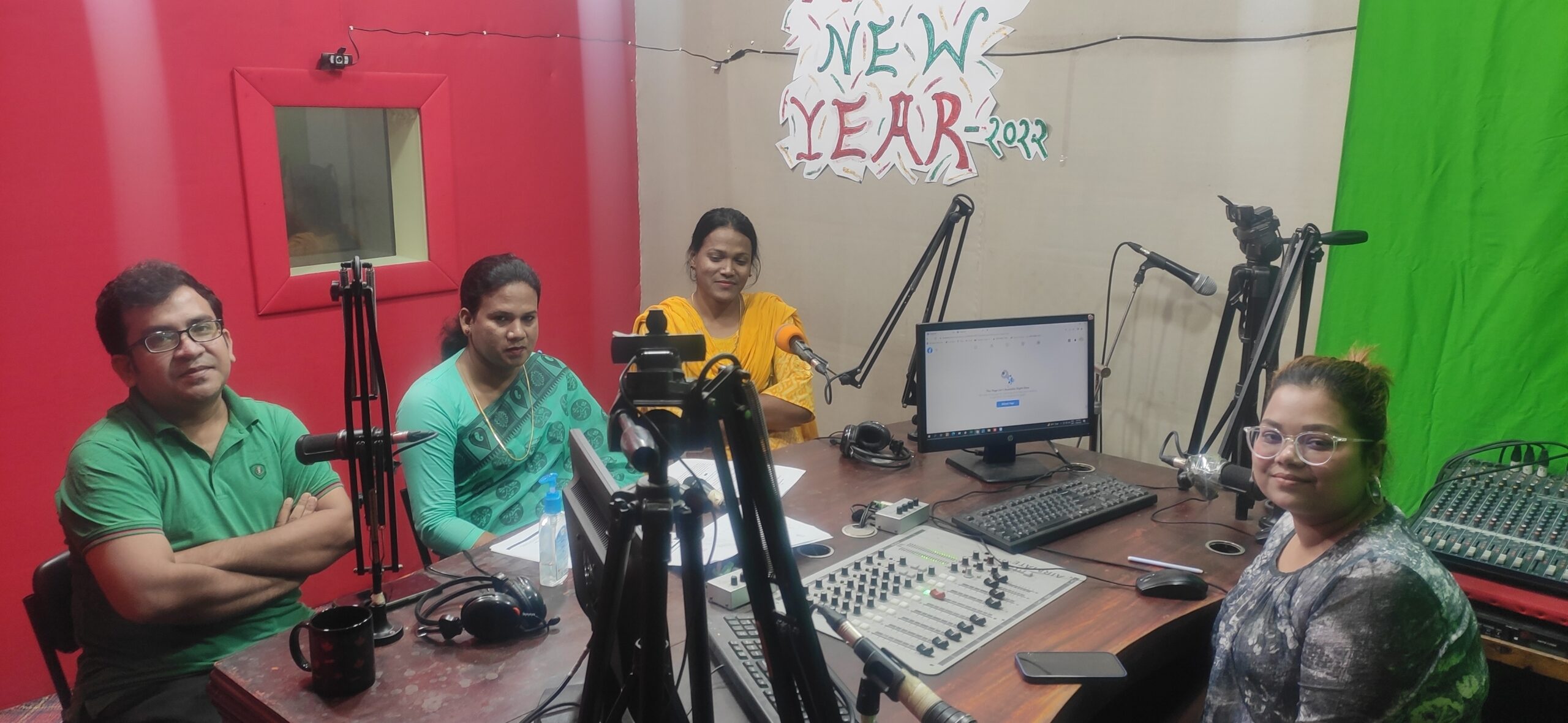Project Title: Empowering left-behind minority communities to effectively participate in the development process of Bangladesh through Community Radio
About 11% of the population of Bangladesh consists of minorities who face discrimination due to their religion, ethnicity, gender identity, and geographical location-based differences. Amongst the minority population, the Dalit, plainland Ethnic Minority, Persons with Disabilities (PwD), Tea Labour and Transgender & Hijra communities are the most marginalised. The discrimination on access to education, healthcare, housing, employment, and legal support persists on, particularly for individuals with lower socio-economic backgrounds.
To empower local minority rights Civil Society Organizations (CSOs) and networks in Bangladesh to effectively engage with these left-behind communities and enable their participation in the local governance & development process, a 42-month project titled Empowering Left Behind Minority Communities to Effectively Participate in the Development process of Bangladesh (ELMC) is being implemented in eight districts of Bangladesh.
The project is co-funded by The European Union (EU) and jointly implemented by Christian Aid, Bandhu Social Welfare Society (Bandhu, BLAST, Nagorik Uddyog and WAVE Foundation. Bangladesh NGOs Network for Radio and Communication (BNNRC), as a technical partner, contributes to this project by developing and broadcasting awareness-raising programmes in favour of changing the negative perception of people toward minority communit

Other target beneficiary group(s)
Parents of the transgender are the others stakeholder, who give consent and inspire their offspring to undertake this challenging career. Simultaneously the local elected representatives and local administration will be supportive of their free access & mobility for enjoying fundamental needs and also protecting them from all forms of discrimination.
Please describe how and where this project is replaceable.
Empowering left-behind minority communities through Community Radios in Bangladesh is a community-based on-demand project. The project has been implemented through the engagement of left-behind minority communities like Dalit, Plain Land Ethnic Minorities, Transgender & Hijra communities, Tea Workers, Persons with disabilities (PWD), other listeners, local media, social media users, Govt. officials and community media broadcasters for developing and broadcasting radio episodes. So, the project is replicable all over the world where Radio waves and social media (SM) are available and functioning.

Please describe how this project is sustainable.
In this era of the Fourth Industrial Revolution (4IR) and rapid change of global context, Radio programs, and social media content becomes a tool to reach wider audiences for building awareness of the left-behind minority community’s effective participation in the development process towards reducing inequalities of the society. Hence Community Radio can play a vital role to make people aware to minimize discrimination in society and cope with the competitive global challenges collectively. As the radio and social media are the most popular media, cheaper, portable, and easy to access so with the contribution of the community the program could be run to remove the social barriers and stigma.

How does this project promote WSIS values in your community?
Through this intervention, WSIS values (Action line- C8) in Bangladeshi communities are strongly adhered to and promoted extensively. This is done through promoting cultural diversity and identity, linguistic diversity, and local content of the left-behind minority community to raise awareness of their rights.
Contribution to the implementations of WSIS Action Lines and the Sustainable Development Goals
Please describe how the project contributes to the implementation of the selected WSIS Action Lines and Sustainable Development Goals.

The project directly links with SDG 10 and Action line C8 in the following ways:
SDG-10. Reduce inequality within and among countries: The project has successfully connected the Dalit, Plain Land Ethnic Minorities, Transgender & Hijra communities, Tea Workers, and Persons with disabilities (PWD) for getting access to Govt. Social safety net program and effective participation in the development process.
C8. (Cultural diversity and identity, linguistic diversity and local content): Promote lifelong learning opportunities for all and raise awareness of the left behind minority community on their rights. Promote sustained, inclusive and sustainable economic growth, full and productive employment and decent work for this community. The focus of action line C8 includes equipping people with the competencies and to meet up the growing need for acquiring knowledge in the use of community radio and social media, capacity building interventions focusing on the development and promotion of programs more professionally through media.
Empowering communities in ICT use and promoting the production of useful and socially meaningful content is a capacity-building intervention that can increase scientific knowledge and promote innovation and research.
Impact
Please describe the qualitative and quantitative economic, social and environmental impact of the project.
The voice of minority communities – Dalit, Ethnic Minority, Transgender, and Hijra is not heard. The rights of minority groups are systematically excluded, discriminated against, segregated from mainstream development, and denied recognition. The recognition of their capabilities, capacities and contribution to society and the economy is not appreciated. This project creates the opportunity for them – who are representatives from the minority communities talk about their overall situations including the COVID-19 context, human rights, access to services, and justice mechanisms, and thereby increasing awareness among minority communities and the population – as a whole.
This project creates a space for developing more inclusive support to the mediation of state-market-society relations, re-imagining of social relations, connectedness & bridging, and collective problem-solving. Improve the responsiveness of demand and supply side, and set up their local agenda by the youths to support them and ask questions to local elected bodies

Challenges
Please list the main challenges and the project’s future perspectives.
The implication of the SDGs especially SDG 10 in this context is yet to be defined in order to combat the factors causing the disadvantaged community especially the Hijra community extreme social exclusion. For a start, the identification of the various barriers – economic, cultural, environmental, political, and social that they are facing must be recognized. This recognition must go hand in hand with appropriate and targeted public provisions for Hijras living in rural Bangladesh in line with community/family-based rehabilitation rather than ignored.
Moreover, it is expected that the future of Dalit, Ethnic community and transgender communities would be made more promising through inclusion in the govt. safety net programs. Besides, government and development professionals, the private sector, NGOs, academia, and community people also come forward to put their joint efforts for the inclusion of these communities in the daily life of rural Bangladesh. Most importantly, the voices of the Hijra and Dalit communities – their ideas, aspirations, and solutions – must be at the heart of this process.
Extended description
Use this field if you wish to provide additional information about the project or references that will aid the evaluation of the project.


